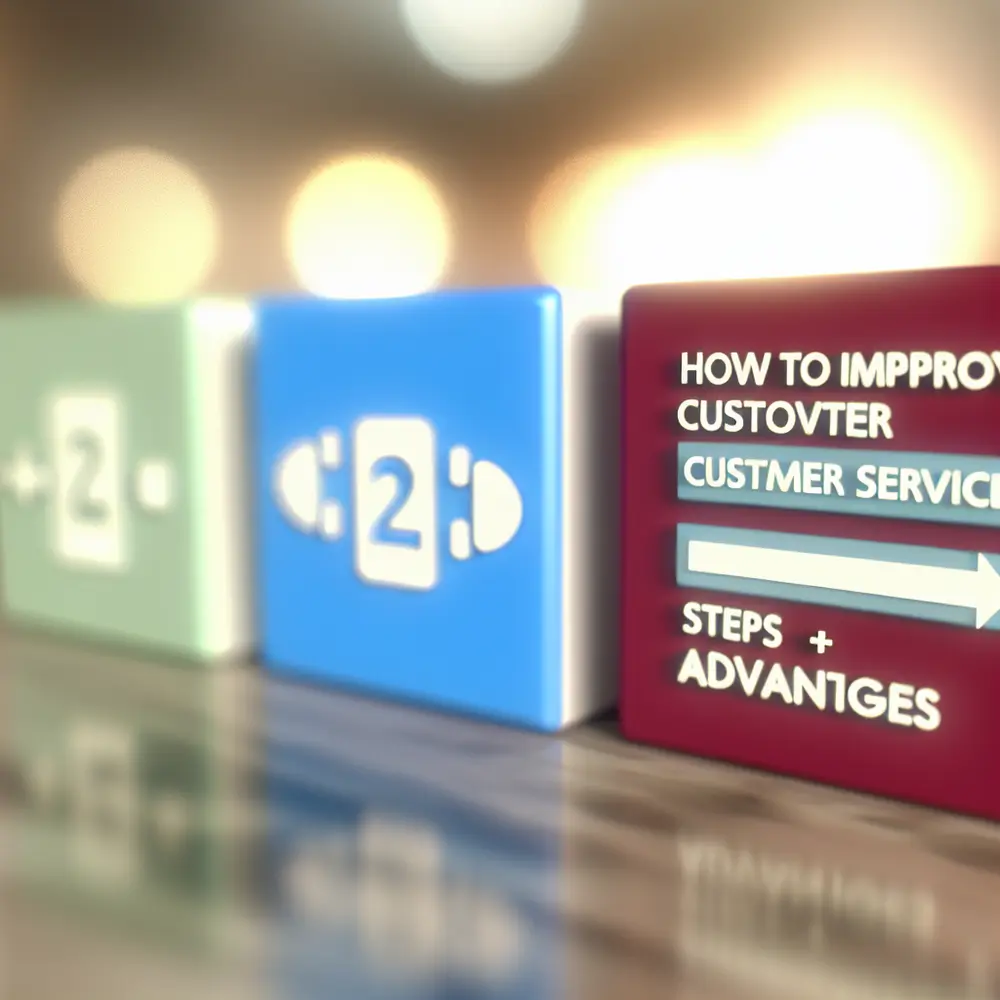Improving customer service is crucial for your business growth and sustainability. You face pressures of customer satisfaction, loyalty, and profitability. Prioritizing customer service leads to a significant return on investment through increased sales and customer retention. This article explores essential strategies to enhance your customer service effectively.
To foster solid customer relationships, you need to implement best practices that encourage effective communication. Training your employees thoroughly ensures they can resolve issues promptly. By leveraging integrated omnichannel support, you enhance customer interactions and build lasting trust. This strategy guarantees consistent service across various touchpoints.
Additionally, soliciting customer feedback is vital for refining your service practices. Conducting regular surveys helps you identify pain points and enables proactive adjustments to your strategies. Analyzing feedback reveals trends that guide future service enhancements and ensures that the customer’s voice shapes your business decisions effectively.
Understanding the Importance of Improving Customer Service
Improving customer service directly influences customer satisfaction, loyalty, and ultimately, profitability. A business’s approach to customer service reflects on its overall performance. Let’s explore key aspects through a fictional case example.
Consider “Clínica Saúde e Bem Estar” that adopted targeted training for their staff. They focused on interpersonal skills and product knowledge, leading to a 30% increase in customer satisfaction scores within three months. Their investment in training resulted in a solid foundation for positive customer interactions.
Furthermore, integrating an omnichannel support platform has streamlined clinic operations. After implementation, Clínica Saúde e Bem Estar reported a 25% reduction in customer complaints due to improved沟通. Consistency across communication channels also improved customer retention rates significantly.
Notably, the clinic regularly conducts surveys to gather real-time feedback. This practice has been successful in identifying specific pain points, enabling them to adjust service strategies rapidly. Thanks to this approach, they experienced a 20% increase in positive reviews on social media platforms.
In conclusion, prioritizing customer service is no longer merely a tactic; it’s essential for defining your business operations. Embracing technology, best practices, and customer feedback allows you to achieve substantial improvements in service outcomes.
Key Steps to Improve Customer Service in Your Business
Effective strategies for improving customer service foster growth and build client loyalty. Here are critical steps to take:
Understand Your Customers’ Needs
Begin by thoroughly understanding your customers’ expectations. Conduct surveys and analyze interactions to identify pain points. For instance, “Transportadora Prime” utilized feedback forms and improved service based on customer insights, leading to a 15% increase in customer retention over six months.
Invest in Employee Training
Training your staff is paramount. Equip your team with the skills needed to deliver swift and empathetic service. “Loja Online Ideal” conducted ongoing training sessions that significantly boosted confidence among employees, resulting in a 40% reduction in response times, enhancing customer satisfaction.
Utilize Technology Wisely
Adopt technology to streamline processes. Using a comprehensive omnichannel platform allows customers to reach you through their preferred channels. “Restaurante Sabor do Brasil” witnessed a 22% increase in efficiency after integrating an omnichannel support system, improving customer satisfaction significantly.
Encourage Open Communication
Create a culture of open communication inside your organization. Engage employees in discussions about enhancing service delivery. “Escritório Consultoria XYZ” established an internal feedback system, resulting in a motivated workforce and a 30% increase in positive customer engagements within a year.
Measure and Analyze Performance
Continuously measure key performance indicators (KPIs) to ensure your customer service efforts yield positive results. Monitor metrics like response time and satisfaction scores, as experienced by “Agência Marketing Eficaz,” which saw a 20% improvement in overall service ratings after implementing KPI tracking.
Best Practices for Creating a Customer-Centric Culture
Building a customer-centric culture is crucial for improving service. Start by understanding your customers’ needs, which enhances CX and drives business growth. Let’s delve into this with relevant examples.
For example, “Clínica Vitalis” established open communication channels for customer feedback. By acting on suggestions, they reported an increase in service ratings by 50% in just six months. Constant input from clients allowed for a more tailored service experience.
Moreover, training staff on empathy significantly elevated CX. After implementing ongoing training on customer interactions, “Loja Bem-Estar” noted a 35% reduction in customer complaints.
Integrating technology, such as omnichannel platforms, allows businesses to provide seamless communication. “Transportadora Ágil” transitioned to an omnichannel solution that resulted in a 25% increase in customer satisfaction scores.
Lastly, recognizing employee contributions fosters a positive work environment. “Hotel Luxo” encouraged team ideas for service enhancement, leading to improved morale and a 30% increase in employee satisfaction.
Measuring Success: Key Metrics for Customer Service Improvement
Tracking the right metrics enhances customer service and informs strategic decisions. Start by determining KPIs aligned with your goals and delve into your performance metrics using practical case examples.
The Customer Satisfaction Score (CSAT) provides insights into service quality. “Empresa de Transporte XYZ” utilized immediate post-interaction surveys, revealing a 20% increase in customer satisfaction after implementing changes based on the collected data.
Net Promoter Score (NPS) is another crucial metric for understanding loyalty. “Clínica Horizontal” noticed a high NPS due to excellent service, signaling strong customer loyalty, while a low score warned of needed improvements.
First Response Time (FRT) greatly impacts customers’ overall satisfaction. “Serviços Rápidos” improved their FRT by implementing structured response protocols, resulting in a 15% boost in customer loyalty.
Tracking the Customer Retention Rate (CRR) helps assess the long-term success of service initiatives. “Agência de Viagens Viajante” monitored their retention rate, gaining insights into customer engagement effectiveness, achieving a remarkable 30% improvement over a year.
Common Challenges in Improving Customer Service and How to Overcome Them
While striving for better customer service, your business may encounter several challenges. Addressing these hurdles effectively is vital for ensuring high-quality service.
A prevalent issue is untrained staff. If employees lack necessary skills, they hinder service quality. “Restaurante Sabor & Co.” invested in training programs, resulting in a 40% improvement in service efficiency after a few months.
A unified communication strategy is crucial. Without integration, customer confusion can arise. “Loja Conforto” implemented an omnichannel strategy that resolved communication gaps, improving response times significantly.
With “Estética Bella Forma,” the challenge of understanding customer needs was prevalent. Regular surveys provided insights allowing them to tailor services, boosting satisfaction levels by 25%.
Resistance to change may also hamper progress. At “Escritório de Advocacia Legal,” adopting new technology faced reluctance. Engaging employees in the transition process led to higher acceptance and smoother implementation.
Finally, establishing KPIs is essential for ongoing assessment. “Construtora Nova Era” incorporated KPIs to track changes and continually improve service quality, realizing a 20% increase in customer satisfaction.
The Long-Term Impact of Improved Customer Service on Your Business
Enhancing customer service is a strategic move that significantly influences your business’s overall success. Let’s investigate how these improvements create long-term impacts.
Investing time in improving customer service builds customer loyalty. “Supermercado Boa Comida” experienced a 50% increase in repeat customers after refining their service practices. Loyal customers engage in positive word-of-mouth, further enhancing your business’s reputation.
Moreover, improved customer service fosters profitability. “Academia Fit & Saúde” discovered that satisfied customers tended to spend more, leading to an overall revenue increase of 30%.
Additionally, seamless experiences cultivated through omnichannel support systems facilitate customer interactions, enhancing satisfaction. “Bistrô Gourmet” reported a 25% rise in their service effectiveness after transitioning to this model.
Ultimately, excellent customer service enhances your brand’s competitive edge. Businesses recognized for stellar service often attract new customers. “Shopper Novel” exemplified this, witnessing an increase in clientele due to their customer-focused approach.
In summary, committing to improving customer service creates a foundation for long-term success. The cumulative benefits materialize through enhanced loyalty, profitability, and competitive differentiation, positioning your business for lasting stability in a competitive marketplace.
To explore comprehensive solutions for optimizing customer interactions, check out Nexloo’s omnichannel support platform.









